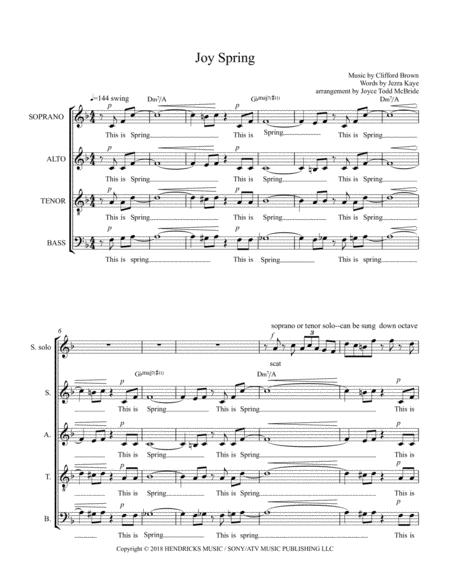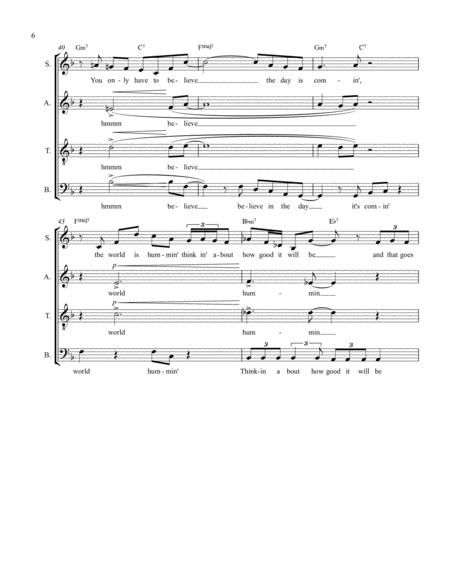
At the same time, whether playing at scorching tempos or on languorous ballads, his range was exhaustive.
#JOYSPRING PDF FULL#
Solo TranscriptionsĪt a time when many modern jazz trumpeters sought technical expertise at the expense of tone, Brown, in common with his friend and paradigm, Navarro, had technique to spare but also developed a rich, full and frequently beautiful tone. The quintet was quickly recognized as one of the outstanding groups in contemporary jazz and Brown as a major trumpeter and composer.

Brown then joined Art Blakey and in mid-1954 teamed up with Max Roach to form the Clifford Brown-Max Roach Quintet. Back in the USA, Brown was fired along with most of the rest of the band when Hampton learned of the records they had made. Contrary to contractual stipulations, many of the young musicians moonlighted on various recordings and Brown in particular was singled out for such sessions. Liberally filled with precocious talent, this band attracted considerable attention during its tour. In the autumn of 1953 he was a member of the big band Lionel Hampton took to Europe. By his late teens he had attracted the favorable attention of leading jazzmen, including fellow trumpeters Dizzy Gillespie, Miles Davis and Fats Navarro.Īt the end of the 40s he was studying music at Maryland University and in 1952, following recovery from a serious road accident, he made his first records with Chris Powell and Tadd Dameron. As a young high school student Brown began playing trumpet and within a very short time was active in college and other youth bands. Clifford Brown (1930-1956) was the most brilliant trumpet player of his generation, an original and memorable composer, a dynamic stage presence and one of the authentic legends of modern jazz.Ĭlifford Brown was born Octoin Wilmington, Delaware. So, what do I think about when I’m soloing? If I took away the bass, drums and piano, does it still swing, sound melodic and sound like the changes to “Joy Spring.” Try it as an exercise. There doesn’t have to be any harmonic acrobatics, just find your way melodically and above all, make it sound musical. I was thinking recently after someone asked me that common question: “what do you think about when you’re soloing?” I’m heavily influenced by the west coast jazz greats like Chet Baker and Art Pepper and the thing that always stands out for me is their ease of navigating through the “changes.” I think it’s important (certainly if you’re beginning to improvise) that you spell out each chord. We hope that we bring you value every week here at the 10 Minute Jazz Lesson and we appreciate all of your support!
#JOYSPRING PDF FREE#
We will also be bringing you many extras exclusively to our patrons including transcriptions and a FREE gift of our latest Ebook, The Diatonic Method.

#JOYSPRING PDF PDF#
Head over to our Patreon page and when you donate $3 or more a month you get this PDF and every other. WANT THE PDF THAT GOES ALONG WITH THIS EPISODE? Don’t fret though, the full transcription is located on our Patreon page, so click the link below to get your hands on it today!

Instead of looking very closely at a lick or piece of vocabulary, we will be talking about some of the larger issues and concepts that make Gary’s playing so amazing. This one is a bit different from our usual lick of the month series. Gary plays an amazing version of Clifford Brown’s Joy Spring on his Instagram page and we are using that as the basis for this episode.

This week features one of my favorite Trumpet/Flugelhorn players from Bristol, UK, Gary Alesbrook.


 0 kommentar(er)
0 kommentar(er)
